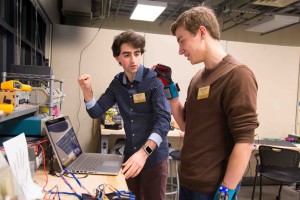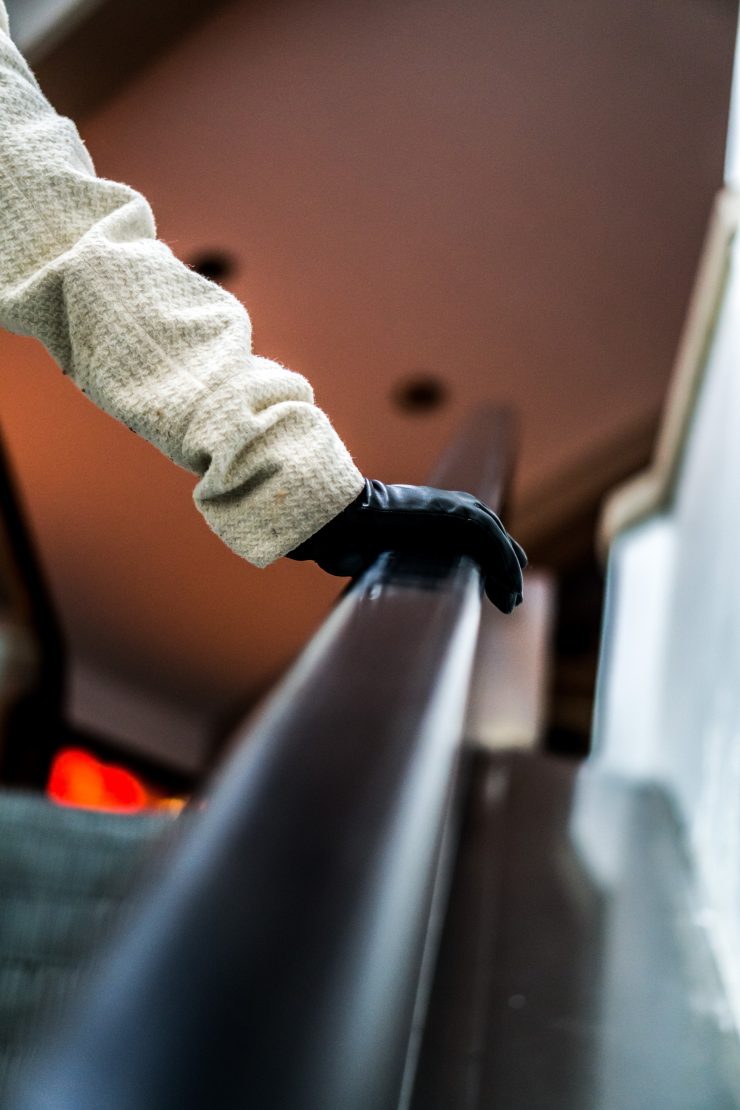Two University of Washington undergraduates, Navid Azodi and Thomas Pryor, have won a $10,000 Lemelson-MIT Student Prize for gloves that can translate sign language into text or speech. How exactly? Each glove integrates sensors on fingers and wrists, in order to record hand positions in 3D. The data produced is then transmitted through BlueTooth to a computer using sequential algorithm – working as a neural system- in order to understand each signed word and say it aloud thanks to a speaker.
We had to chance to ask Navid Azodi a few questions about their project!
Where did you find inspiration for this project?
Thomas and I met early our freshman year of college and bonded over our shared interest in invention and problem solving. One day I shared with Thomas my personal story, which became part of the inspiration for SignAloud. For the first seven years of my life, I did not speak and had to rely on non-verbal communication. This major communication barrier I faced, alongside Thomas and I’s passion for technology and language led to the development of SignAloud.

Did you expect to win the Lemelson-MIT prize? What other projects were on the list?
When we first applied for the Lemelson-MIT Student Prize we had no expectation for the results. We applied on a whim, mostly as a learning experience and to say we tried. In that process we ended up moving on to the final round and winning.
Among the other projects selected by the Lemelson-MIT jury, some also tackle issues linked to disabilities: It is the case of Catalin Voss, who developed the Autism Glass Project, an emotional learning aid for children with autism, based on smart glasses. Thanks to facial recognition, the Google Glass shows to autistic children the emotions of their interlocutors, helping them to understand better the environment around them. Some others focused on automated gardens for space applications, a fully automated restaurant, new transmission for hybrid vehicles, or coloring to mix with disinfectant solutions. A list of all rewarded projects can be found here.
What are the main differences between your project and EnableTalk, or other projects tackling the same issues?
This idea has been attempted before, but a lot of projects do not stay true to the syntax and grammar of American Sign Language. Trying to capture such a dynamic and fluid language such as ASL is challenging and nearly impossible utilizing only a pair of gloves, but in our development we tried focusing on being as accurate as possible. Also, our design is significantly more ergonomic than that of similar projects.
Indeed, several other projects were already focusing on translation from sign language to text and voice, like EnableTalk, Hand’speaker,or public funded projects from China. The concept has been around for a pair of years, but design and new electronic capabilities allow strong enhancements on the comfort, preciseness and fluidity of language
Do you plan to develop this project further, or was it just a test/experiment as a student? Have you thought about starting a business or give open source access to your project?
In the last few weeks, we have had many opportunities presented to us and are still discussing on what are the best options moving forward.
The LOOK FORWARD PERSPECTIVE
We were very impressed by this project that answers a real problem for most deaf-mute persons. Once again, it is very interesting to see that people with different backgrounds, who do not have a diploma in languages or medicine, can propose their own solutions to a problem that everybody knows. Technology really is changing the world we live in!
With such a promising prototype, the project is on a good way. The team will still have to work on design, but also portability! We are wishing all the best to these two young inventors!
